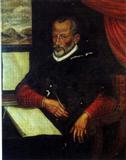 The Renaissance Period was an era of tremendous growth and change. It evolved after the world of the Medieval "dark ages." It was a time for cultural and intellectual revolution.  Â
The Renaissance Period was an era of tremendous growth and change. It evolved after the world of the Medieval "dark ages." It was a time for cultural and intellectual revolution.  Â
The term 'renaissance' is a French word meaning rebirth. The Renaissance was a time of massive upheaval especially in terms of culture, an era of change as well as growth. It was a time of exploration and adventure when sailors like Columbus went on long sea voyages in search of trade routes to the East. Religion faced its own revolution as the Reformation spread.
Renaissance Period
The Renaissance Period (1450-1600) was a time of great intellectual and creative achievers like the artists, composers, writers, among others. An example was Leonardo da Vinci, an extraordinary man who contributed to various areas - he was a great painter, sculptor, architect, inventor, and more. Â People felt that up until this time, the world had lived in the confines of the medieval 'dark ages.' The Renaissance was now the time for a new beginning. The Church was no longer the main source of knowledge. The invention of printing, around 1450, helped the spread of the new learning and more knowledge. Â Â
